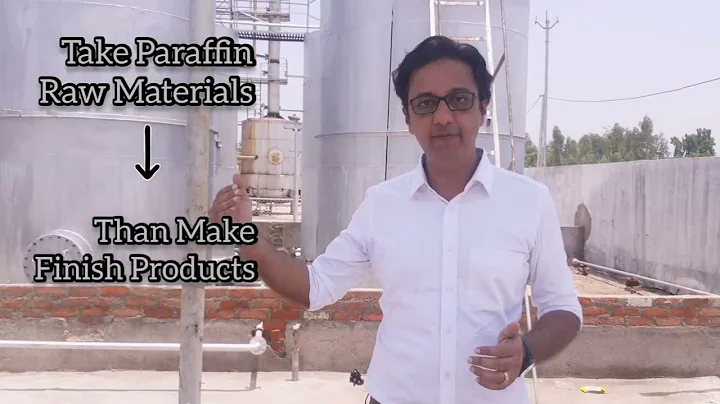Goth 101: Master the Art of Sewing on Patches
Table of Contents:
- Introduction
- Materials Needed
- Pinning the Patch
- Threading the Needle
- Securing the Knot
- Starting the Stitches
- Continuing the Stitches
- Locking the Thread
- Finishing the Patch
- Conclusion
Article:
👕 How to Stitch a Patch on Your Garment: A Step-by-Step Guide 👚
Are you looking to add a personal touch to your favorite garment? Stitching a patch onto your clothing can be a simple and creative way to give your outfit a unique flair. Whether you want to add a pop of color or showcase your love for a particular design, this step-by-step guide will teach you everything you need to know about stitching a patch onto your garment. Get ready to unleash your inner seamstress and create a one-of-a-kind piece!
1. Introduction
Stitching a patch onto your garment is a fun and creative way to customize your clothing. Whether you're adding a small accent or completely transforming the look, patches offer endless possibilities for customization. In this guide, we'll walk you through the process of stitching a patch onto your garment, from gathering the necessary materials to securing the final stitches.
2. Materials Needed
Before you start stitching, make sure you have all the necessary materials at hand. Here's what you'll need:
- Sewing pins: These will be used to temporarily hold the patch in place while you stitch.
- Patch of choice: Select a patch that matches your style and complements your garment.
- Sewing scissors: A good pair of sewing scissors will make it easier to cut and trim the thread.
- Sewing needle: Choose a needle that is large enough to accommodate the thread you'll be using. Button or upholstery thread is recommended for its thickness and durability.
- Garment: The piece of clothing you want to attach the patch to.
3. Pinning the Patch
Start by placing the patch on the desired location of your garment. Use sewing pins with a ball end to secure the patch in place. Insert the pin through the patch and fabric, then weave it back and push it through again. Repeat this process until the patch is securely pinned on, paying attention to the edges to ensure it stays in place.
4. Threading the Needle
Thread your needle with the desired thread, making sure it's long enough to comfortably work with but not too long to become tangled. If the thread begins to fray, trim a small portion from the end and re-thread the needle. Position the needle on the thread so that you have a long end and a short end. Tie a couple of knots using the long end to keep the thread in place.
5. Securing the Knot
To prevent the knot from showing through the front of the garment, push the needle through the back and out to the front, anchoring the knot behind the fabric. Loop the thread over the knot a few times to ensure it's secure. This will be your starting point for the stitches.
6. Starting the Stitches
With the knot secured, take the needle and push it diagonally across the patch from one side to the other, ensuring that it lines up with the previous stitch. The goal is to create a neat and even line of stitches. Practice may be required to achieve straight stitches, but don't worry! Imperfections can add a homemade charm to your patch.
7. Continuing the Stitches
Continue stitching diagonally across the patch, aligning each stitch with the previous one. As you become more comfortable, you'll find a rhythm that allows you to create a consistent pattern. Keep your stitches evenly spaced and take your time to ensure a clean and professional finish.
8. Locking the Thread
Periodically lock your thread by making a few extra stitches in the same spot. This will secure the thread in place and prevent it from unraveling. Once you've locked the thread, push the needle through to the back, avoiding exposing the knot on the front. Tie a knot using the same looping technique as before, making sure it's as close to the fabric as possible for a secure hold.
9. Finishing the Patch
Continue stitching until the entire patch is securely attached to your garment. Be mindful of removing the pins along the way to avoid any accidental scratches. Once the patch is fully stitched, trim any excess thread and admire your handiwork! The backside may show diagonal lines, but that's a sign of a job well done.
10. Conclusion
Stitching a patch onto your garment is a creative and rewarding DIY project. By following this step-by-step guide, you've learned how to add a personal touch to your clothing with ease. Embrace your inner seamstress and experiment with different patches and designs to make each garment uniquely yours. Happy stitching!
Highlights:
- Stitching a patch on your garment is a fun and creative way to personalize your clothing.
- Gather the necessary materials such as sewing pins, a patch of choice, sewing scissors, a sewing needle, and the garment itself.
- Pin the patch in place using sewing pins with a ball end.
- Thread the needle and secure the knot behind the fabric.
- Start stitching diagonally across the patch, aligning each stitch with the previous one.
- Lock the thread periodically to ensure it doesn't unravel.
- Finish by securing the final stitches, trimming any excess thread, and admiring your handiwork.
FAQ:
Q: Can I remove the patch after stitching it?
A: Yes, you can remove the patch by carefully cutting the stitches or using a seam ripper. However, keep in mind that this may leave small holes or marks on your garment.
Q: Can I stitch patches onto delicate fabrics?
A: It's possible to stitch patches onto delicate fabrics, but extra caution is recommended. Use finer needles and thinner threads to minimize damage to the fabric.
Q: Can I machine wash garments with stitched patches?
A: Yes, most garments with stitched patches can be machine washed. However, check the care instructions for both the garment and the patch to ensure they can withstand machine washing.
Q: Can I stitch multiple patches on a single garment?
A: Absolutely! Get creative and experiment with different patch combinations to create a unique look. Just make sure you have enough space and that the patches complement each other.
Q: Where can I find unique patches?
A: You can find unique patches at craft stores, online marketplaces, and even thrift shops. Additionally, many independent artists and designers create custom patches that add a personal touch to your garment.
Resources:







